The Rings Of Power Finale: How Season 2 Finally Let The Lord Of The Rings Prequel Go Its Own Way
\*Warning — This piece contains spoiler for all of The Lord Of The Rings: The...

*Warning — This piece contains spoiler for all of The Lord Of The Rings: The Rings Of Power Season 2*****
Like the fledgling fellowship at the start of The Lord Of The Rings, the first season of The Rings Of Power — Amazon’s risky, billion-dollar high fantasy gamble on taking the marginalia of J.R.R. Tolkien’s legendarium and turning it into the next Game Of Thrones — took some time to find its footing. For all its meticulous attention to detail, extraordinary design work, and quality performances, there’s no getting around the fact that in order for creators J.D. Payne and Patrick McKay to immerse us in the Second Age of Middle-earth — a time long before there was even a Bag End, let alone any Bagginses — they had to do a lot of narrative table-setting first. As a result, Rings Of Power’s first season vacillated between great moments — the charge of the Númenóreans on the Orcs, every rolled ‘r’ of Morfydd Clark’s fiery young (well, elf-young) Galadriel, the big Halbrand-Sauron reveal — and spells of somewhat more laborious, occasionally less elegantly delivered set-up for great moments yet to come.
But with the arrival of The Rings Of Power Season 2, it feels like McKay, Payne, and their collaborators have had their Council of Elrond moment, with the individually great parts now cohering into a more formidable, barnstorming whole. A key part of that seems to be that whilst Rings Of Power continues to share a stylistic grammar with Peter Jackson’s iconic movies — from the Art Nouveau/Art Deco elven and dwarven design, to the regal horns and swelling strings of Bear McCreary’s score, to certain lines of very familiar-sounding dialogue — and remains entrenched in Tolkien’s dense lore, this season has really seen the series commit to charting its own course through Middle-earth. Has that pissed off Tolkien fundamentalists? Naturally. Has it potentially alienated a more casual fantasy fanbase? Quite probably. But has it also given us some of the most jaw-slackening hours of TV we’ve seen this year? Absolutely.
Here are just a fistful of the things that have made The Rings Of Power such unmissable viewing this season.
The Lore Of The Rings
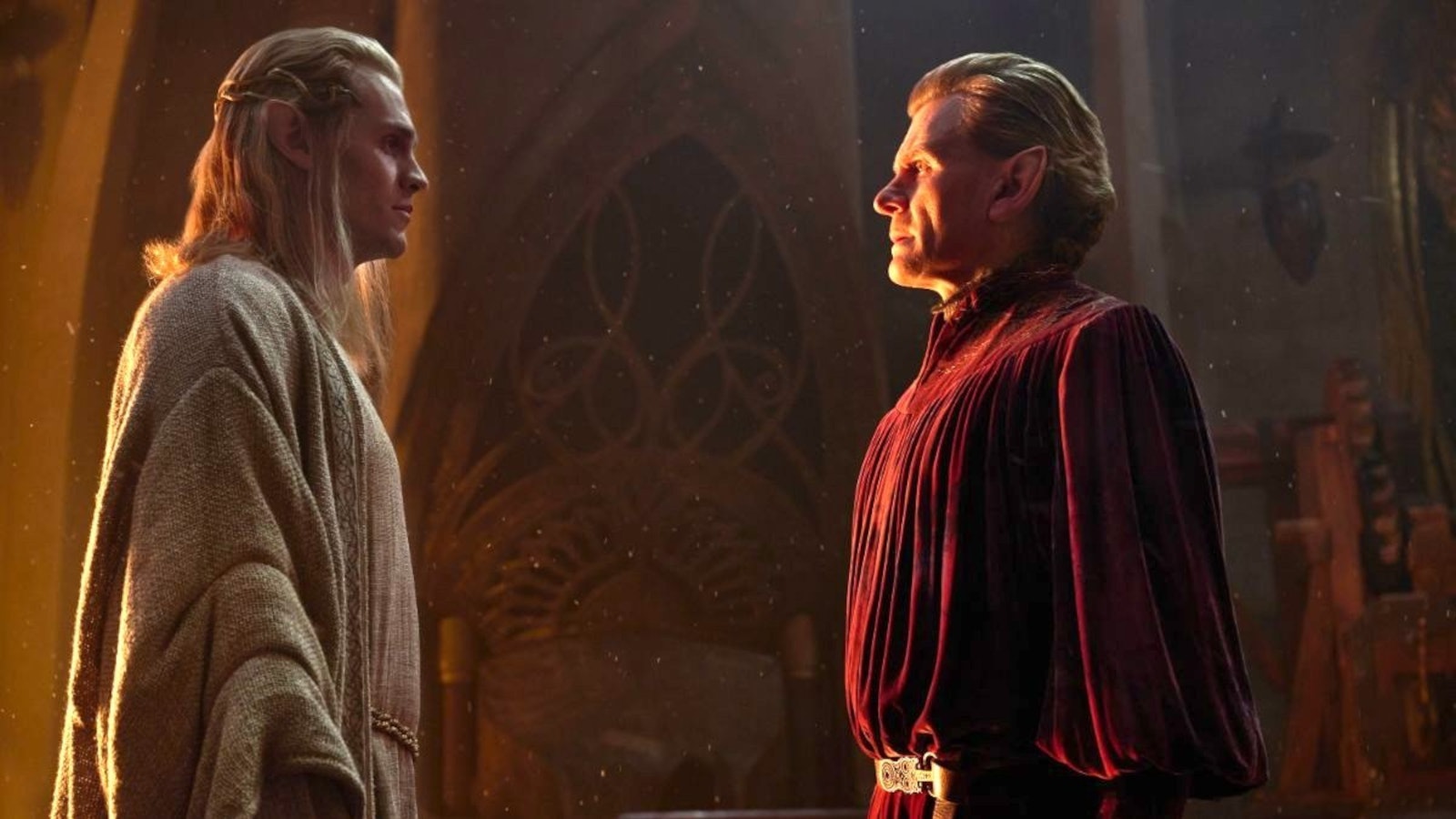
The standout plot thread from this series, without a shadow of a doubt, has been the slow-burning seduction of Charles Edwards’ elven smith Celebrimbor by Charlie Vickers’ Sauron/Annatar. As co-showrunner Patrick McKay mentioned during our recent Q&A screening of Rings Of Power’s Season 2 finale, there are only four sentences written about Celebrimbor in the sections of Tolkien’s legendarium Amazon have the rights to. “We know that he’s an elf in Eregion, we know who he’s related to, we know he’s involved in making the rings of power, and we know that he dies,” deadpanned McKay — and he’s not wrong. But having established Celebrimbor’s pride and ambition as a great elven Lord in his own right in Season 1, and having seeded the way Sauron — then Halbrand — is capable of appealing to and manipulating the craftsman’s ego to forge the rings of power, Payne and McKay were able to take the bare minimum and create from it a great tragedy.
Who among us will forget the charming Annatar’s increasingly malicious gaslighting crusade? Or the cruel moment Celebrimbor first clocked the mouse's movement pattern in his gilded cage of a forge? How about the electricity that crackles between Edwards and Vickers — easily this season’s true MVPs — as Sauron’s true nature is revealed and the battle of wills commences? Or the crushing dramatic weight of Celebrimbor’s final stand against his captor as he tauntingly calls him “Lord of the rings”? It’s not the story of Celebrimbor and Sauron as Tolkien himself wrote it, nor anything with a direct corollary in Jackson’s films. And yet, as an expansion upon the perennial struggle between the oppressive forces of darkness and the persistence of light that dominates Tolkien’s texts — and as a sage reminder of the true depths of Sauron’s blackened soul, and the nobility of Celebrimbor's — it fits perfectly, serving this story’s needs as opposed to anybody else’s.
A Wizard Is Never Late, Nor Is He Early…
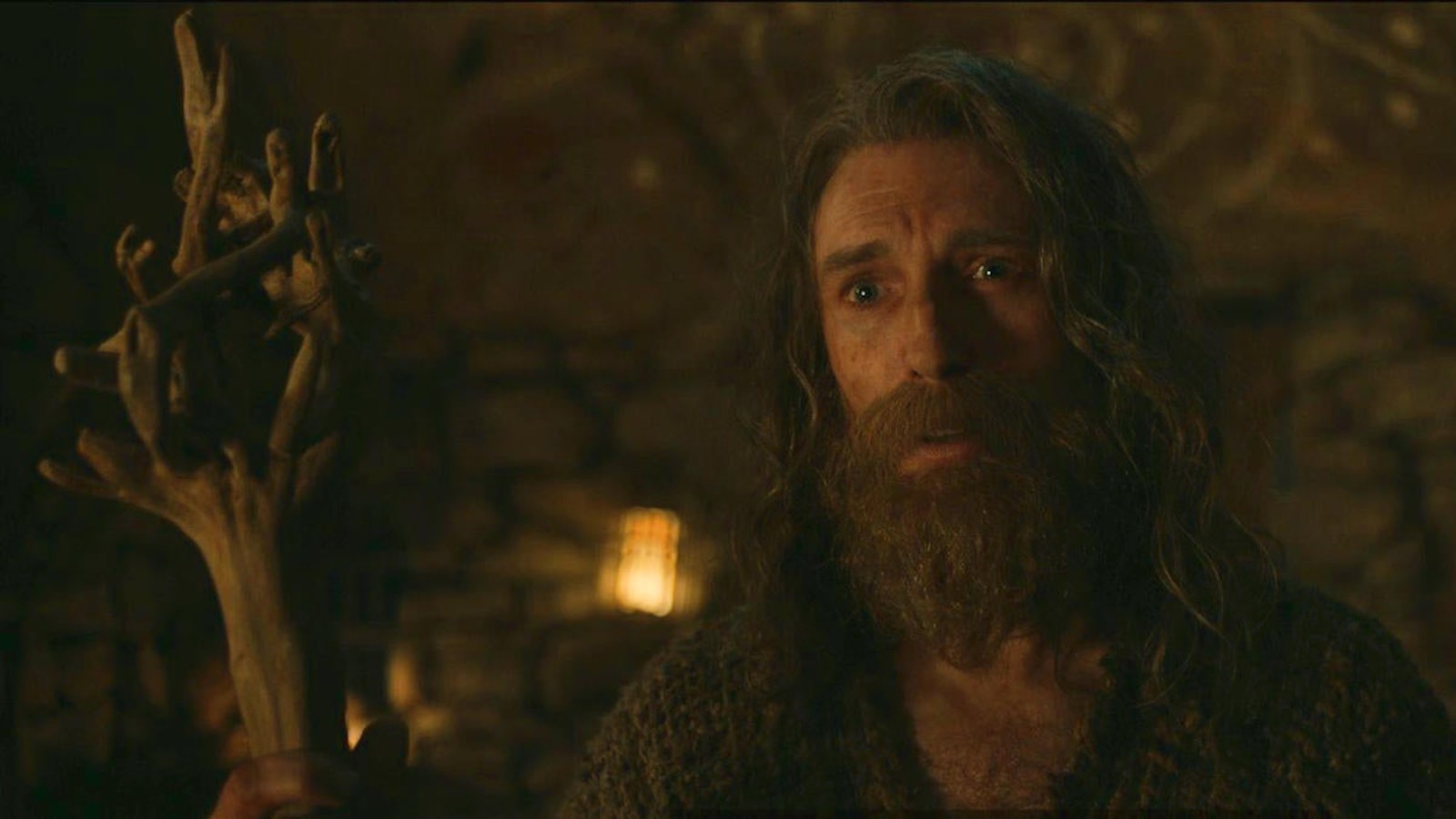
Whilst the mystery of Sauron’s identity was duly exposed by the end of Rings Of Power’s first series, that of another Maia was left unresolved. And though we had a fairly good inkling as to who Daniel Weyman’s Stranger may turn out to be heading into this season (the fondness for Halflings, grey outfit, affinity with moths, and “always follow your nose” weren’t exactly subtle), it didn’t make Gandalf’s ‘Grand Elf’ reveal any less fist-pump worthy. Now sure, there are Tolkienites who will swear by Gandalf having never appeared in Middle-earth prior to the Third Age because it isn’t in Tolkien’s books, and who will look to his “to the East I go not” statement as proof he never set foot in Rhûn (despite it more likely referencing Mordor) — and if this interpretation of the character and the timeline doesn’t work for you, then fair enough.
However, the presence of Gandalf in The Rings Of Power — beyond the simple fact that The Lord Of The Rings without Gandalf would feel like Batman without, well, Batman — and the slowly unfurling mystery of his identity has provided the show with a warmth and magical wonder that feels vital as things continue to get darker elsewhere. To see Weyman’s wizard fostering a bond with the Harfoots and Stoors, who almost doubtlessly will go on to find the Shire somewhere down the line, creates connective tissue to the wider tales of Middle-earth without cumbersomely tethering events now to ones that follow, all the while bringing Tolkien’s keen sense of home to the fore. What’s more, this season’s exploration of his bond with Rory Kinnear’s Tom Bombadil (more on him momentarily), the unknowable Eldest who helps set him on his path to becoming the servant of the secret fire and choosing friendship over power, really reinforces the mythological weight Rings possesses. And that reveal? With the “Thank you, Grand Elf"s, the staff, and then the fireside singalong with Old Tom himself? Finer than the finest pipe-weed.
Bright Blue His Jacket Is, And His Boots Are Yellow
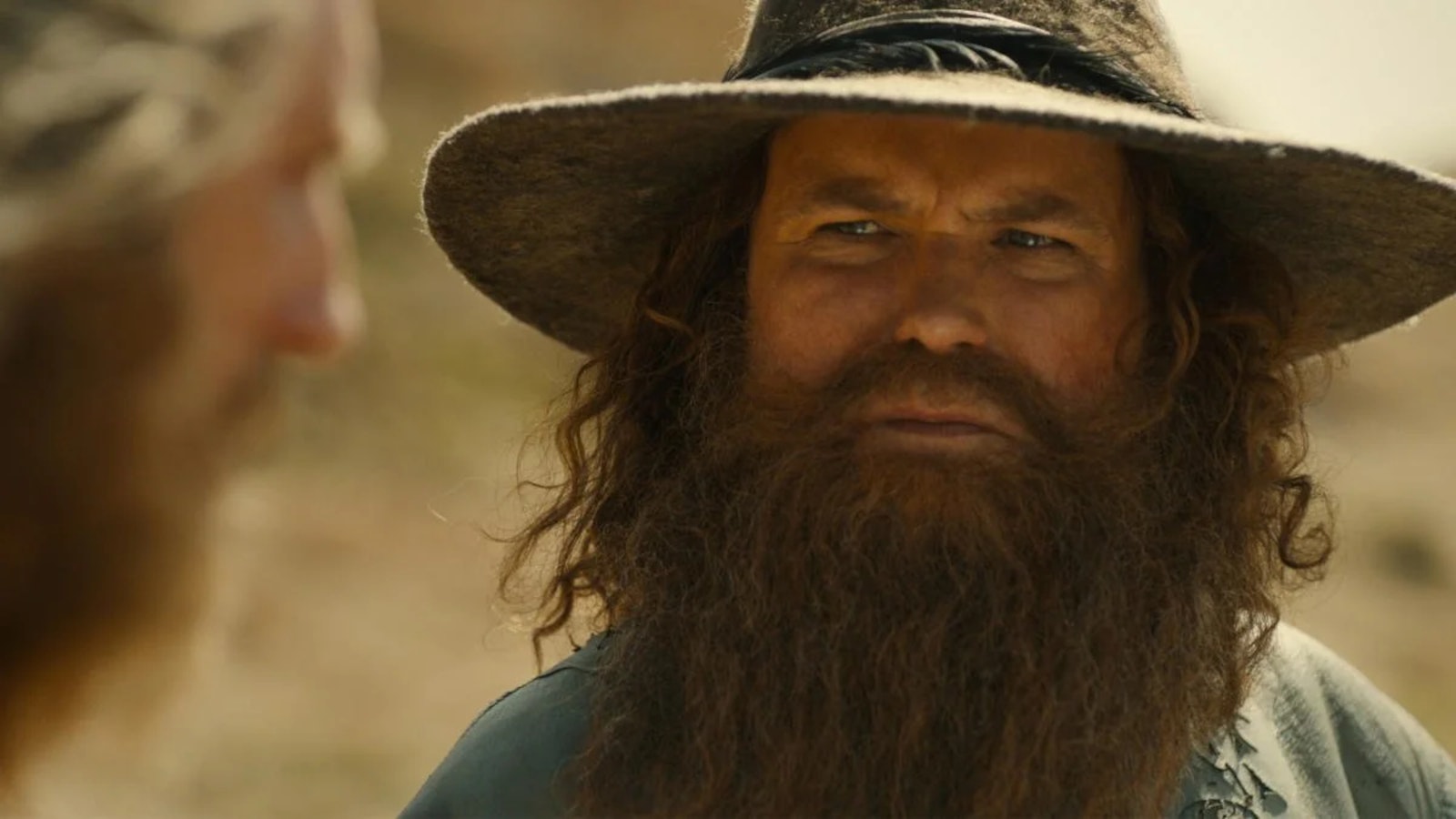
Heading into Season 2, much of the focus of online discourse surrounded the long-awaited first ever appearance of Tom Bombadil on our screens. “The most musical character in Tolkien’s legendarium,” as composer Bear McCreary described him to Empire, forest-dwelling Bombadil in the books is largely read as a whimsical figure, with his colour-clashing garb and no shortage of nonsense songs. Here however, relocated to Rhûn and brought to soft-spoken life by an endearingly unassuming Kinnear, Bombadil — rather than appearing as the fan-service some may have expected — is reconfigured anew as a mentor figure to Gandalf/The Stranger, an ageless being who feels like a folk-song given bearded form. Featured sparingly but poignantly, Old Tom just works. Where once the prospect of seeing Bombadil in a Rings project would’ve had us covering our eyes and blocking our ears, now we’d happily welcome him in any and all future trips to Middle-earth. And McCreary’s ‘Old Tom Bombadil’ song, sung by Rufus Wainwright? Instant chills. Every time.
So Long, Eregion
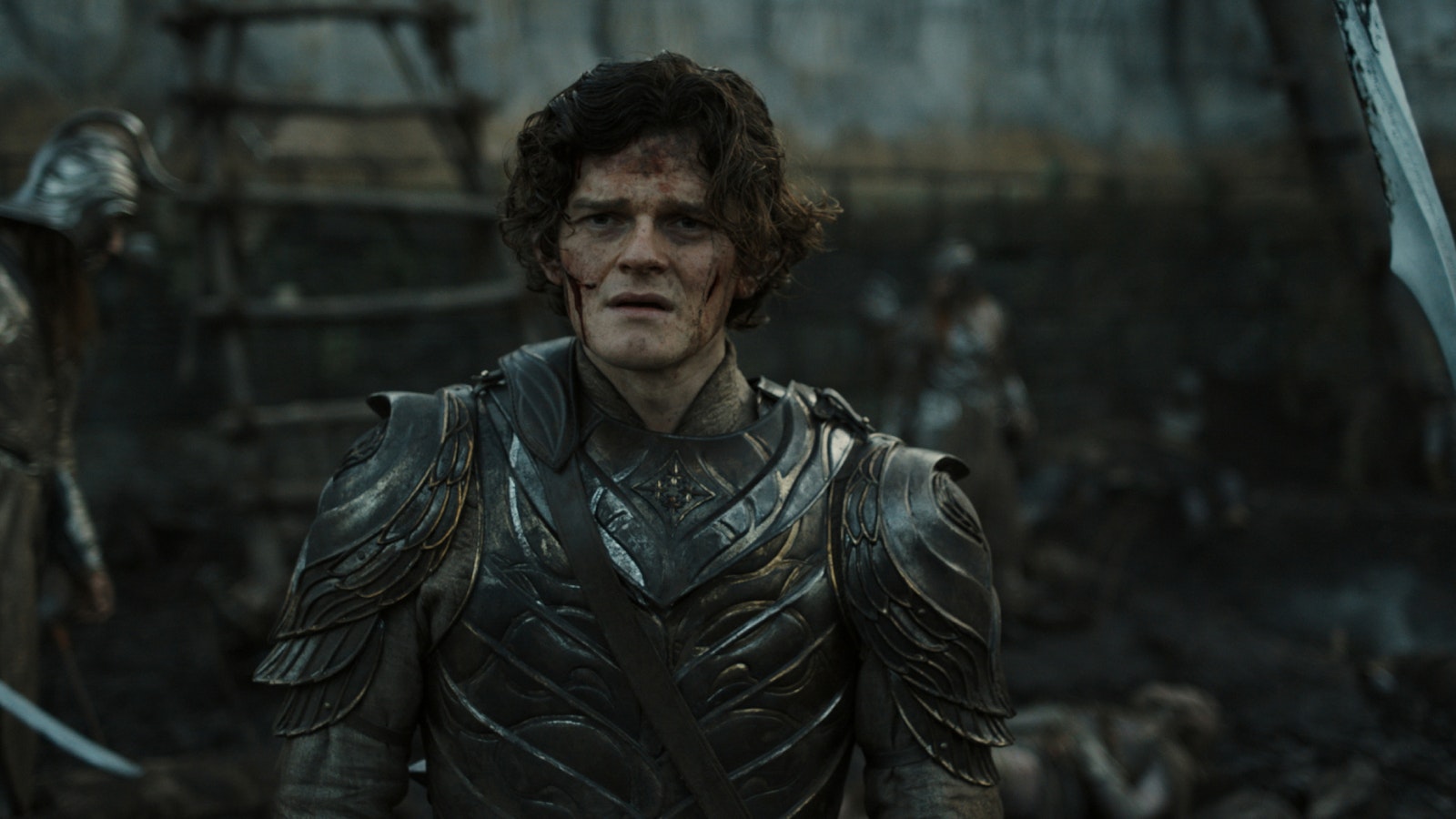
One of the prevailing criticisms of The Rings Of Power’s first season was its relative lack of the kind of sweeping battles that Jackson’s Lord Of The Rings — and even The Hobbit — trilogies were known for. No such criticism can be levied against the show’s second season, in which the Siege of Eregion — the brutal conflict in which Gil-galad and Elrond’s armies go head-to-head with legions of Uruk at Celebrimbor’s elven stronghold — provided the setting for a three-episode spanning epic for the (Second) Ages. In glorious, well-lit (naming no names...), fierce fashion we saw Benjamin Walker’s Gil-galad go full warrior king with his trusty spear, Aeglos; we saw Robert Aramayo slice, dice, and trebuchet his way through the Orc masses; and we saw — and heard — the colossal hill-troll Damrod raze the battlefield as extreme metal made its Middle-earth debut. And from the first sighting of the Orcs across the river to the climactic arrival of Durin and the dwarves, it was a perfectly paced, character-driven set-piece worthy of its place among Rings' great on-screen scraps.
In fact, forgiving *that* uncomfortable kiss between Elrond and his future mother-in-law Galadriel (justified as it may be in context of the whole pin-smuggling distraction), it was everything a fan of Tolkien’s works — or high fantasy in general — could’ve possibly hoped for. A truly cinematic spectacle, to be sure, but also a pivotal moment in Rings Of Power’s story, too: it is from this bloody battle that Rivendell goes on to be found; that the closing of the Door of Durin to keep Sauron’s forces at bay (and, by consequence, elves out) comes about; and that, as we’re about to discuss, two monumental, profoundly impactful deaths occur.
Father(s) & Son(s)
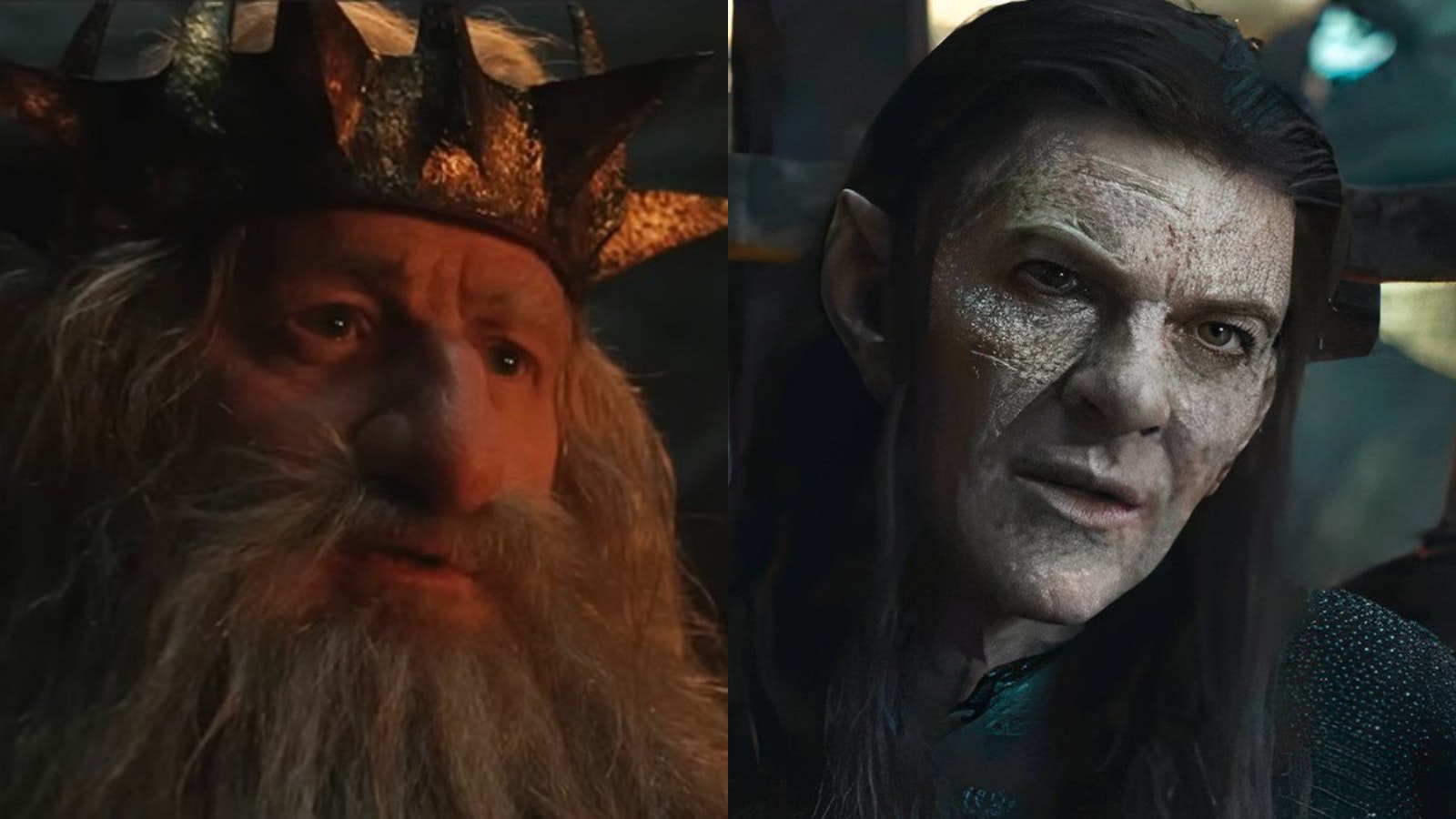
If all of the above somehow weren’t enough already to convince you that this season Payne and McKay have been giving us the meat and giving it to us raw (so to speak), the series’ grand finale saw two of the show’s longest and slowest burning plot threads — King Durin III’s (Peter Mullan) struggle with addiction to his ring of power, and fallen elf Adar’s (Sam Hazeldine) attempts to protect his Uruk children — come to a head, both with a flawed father meeting his maker in the presence of his children.
For the former, resolution comes in a moment of heroic self-sacrifice, with King Durin III — who, for most of the series, has been positioned as a corruptible antagonist — leaping, axe in hand, to take on the Balrog that dwells deep in the Mines of Moria. As a visual spectacle alone — bright orange flames engulfed in shadow, the dwarven king silhouetted against the Middle-earthian equivalent of Satan — it’s a stunningly shot tableau that feels right at home with the illustrations of John Howe and Alan Lee. (Noteworthily, showrunners McKay and Payne told Empire that it’s a shot they’ve had in their heads for five years!) But further, as the conclusion of Durin III’s arc, which at times has felt like dwarven Succession lite and at others served as a powerful rumination on the rings’ true corrupting influence, it’s even more affecting, acting as a very Tolkienian reminder that — as a wise Hobbit once said (or once will say) — “there’s some good in this world, and it’s worth fighting for.”
As if the heartache of King Durin III’s death — and its ramifications for future ring-based power struggles — wasn’t enough, we then have to deal with the loss of Adar, one of the best original characters Rings Of Power has brought us. Having seen the fallen elf lead a mutiny against pre-Venom goo Sauron in the Season 2 opener, this series has continued to follow Adar as he seeks to find a place in Middle-earth for his dysfunctional family. And whilst, again, some of the more anal Tolkienites have taken umbrage with the show’s efforts to reframe the Orcs as involuntary cogs in the machinery of war, as creatures with their own hopes and desires, McKay and Payne’s willingness to dig beneath the source’s surface — and move away from the more one-note, mud-made monstrosities of Jackson’s movies — opened up a new, richer lens through which we can now view Tolkien’s creations. All of which is to say that the moment Glûg (Robert Strange) and his fellow Uruk plunged their blades into Adar at the behest of Sauron was almost as painful for us as it must’ve been for our favourite Orc-daddy. Almost!

Even with everything talked about above, there are still so many more standout moments from The Lord Of The Rings: The Rings Of Power Season 2 that we haven’t even touched upon here. The writing becoming increasingly apparent on the wall for the men — and women — of Númenor! The continued rehabilitation of Isildur's legacy as McKay, Payne, and Maxim Baldry remind us of the hero he once was! Elendil wielding the legendary blade, Narsil! Ciarán Hinds’ Dark Wizard and his suspiciously straight beard! How about the seeds being tantalisingly sown for Theo to lead his people to freedom from Númenorean oppression and found Rohan (think of all the Theo names in Rings, it makes sense!) Did we even mention the finding of Rivendell? Because it looks as heavenly as Tolkien himself illustrated it, Elfvengers and all! Anywho, you get the idea… this has been a season of satisfying revelations, thickening plots, and unapologetically normie-averse high fantasy of the highest order.
So now, with the series’ creative producer Lindsey Weber telling the crowd at our screening of The Rings Of Power’s season finale this week that “the fellowship is at work, and hopefully there will be news shortly,” the wait for The Lord Of The Rings: The Rings Of Power Season 3 begins in earnest. Until then, namárië, nerds!
What's Your Reaction?























